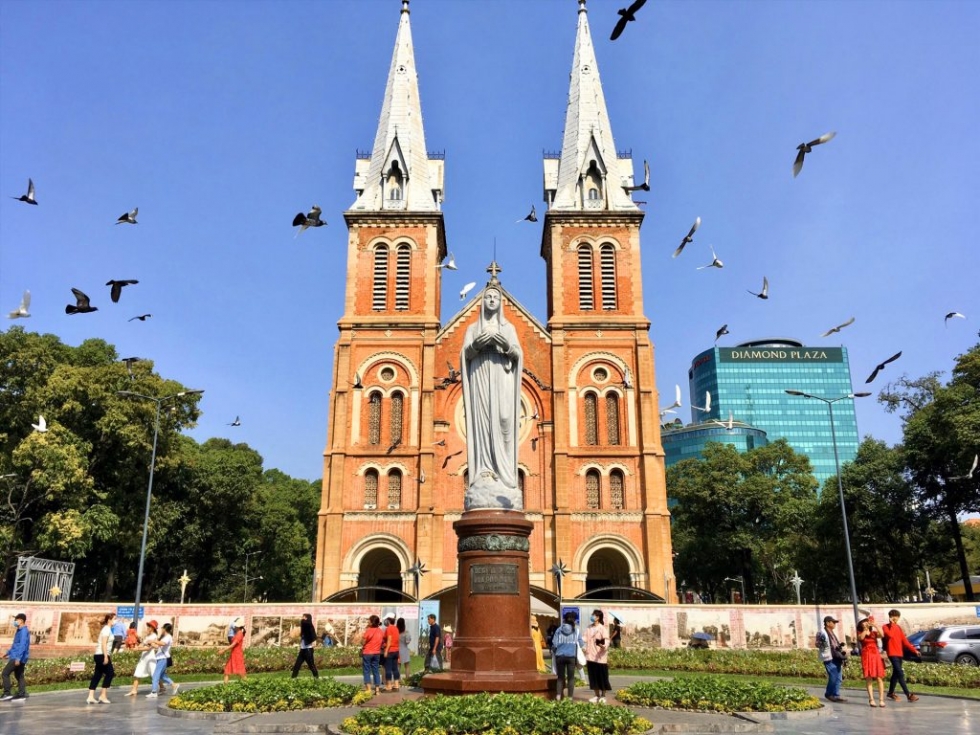
Mention Hanoi, and images of an ancient capital steeped in a thousand years of history spring to mind. But mention Saigon—now officially called Ho Chi Minh City—and people instantly think of dazzling lights, vibrant streets, and a city that never seems to sleep.
Even when night falls, the city pulses with life, its energy seemingly endless. As the sun rises again over buzzing streets and bustling crowds, you might find yourself wondering: What is it about this place that makes life here so exhilarating?
Let’s explore some of Saigon’s most iconic destinations to uncover the spirit and culture that keep this city forever alive.
Ben Thanh Market
Ben Thanh Market is practically synonymous with Saigon and has been a symbol of the city for generations. Located right in the heart of District 1, beside Quach Thi Trang Square and 23/9 Park, its prime location ensures a constant flow of locals and tourists alike.
Construction of the market began in the early 20th century, and it’s been open ever since, housing over 3,000 stalls selling everything from affordable trinkets to luxury goods. From around 8 or 9 a.m., the market bursts into life as vendors throw open their stalls, filling the space with vibrant colors, enticing aromas, and the lively sounds of bargaining.
Saigon Notre Dame Cathedral
While it may not share the same romantic lore as its Parisian counterpart, the Saigon Notre Dame Cathedral, officially known as the Cathedral of the Immaculate Conception, is a stunning architectural gem. Built in French colonial times, its elegant Romanesque style and red-brick façade have made it one of Saigon’s most beloved landmarks.
Every weekend, worshippers gather here for mass, filling the cathedral with hymns that echo through its towering interior.
Saigon Central Post Office
A favorite spot for photography enthusiasts, the Saigon Central Post Office is a masterpiece of colonial architecture. Designed by French engineer Alfred Foulhoux, it blends European sophistication with classical Asian touches.
Its façade is adorned with sculpted laurel wreaths and elegant carvings, while a grand clock sits above the main entrance. By night, the entire building glows, standing proudly amidst the city center’s modern landscape.
Saigon Opera House
Inaugurated in 1900, the Saigon Opera House (also known as the Municipal Theatre) is another relic of French colonial influence. Its grand Western European architecture mirrors the elegance of the Hanoi Opera House and has witnessed more than a century of Vietnam’s history.
From resistance movements to the reunification of the country, this magnificent venue has stood as a silent observer to Saigon’s evolving story. Inside, its opulent interiors and intricate reliefs continue to captivate visitors and art lovers alike.
Saigon Square
If shopping is your passion, Saigon Square is your paradise. With three locations in District 1, this bustling shopping complex is packed with stalls offering everything from trendy clothes and handbags to accessories and souvenirs.
Prices can vary greatly—many goods are export-quality—so don’t hesitate to haggle. Bargaining is expected and part of the fun. Dive into the maze of stalls and you’re sure to find a stylish treasure or two to take home.
Starlight Bridge
For romance and a touch of modern magic, make your way to the Starlight Bridge in the Phu My Hung urban area. By day, it may look like an ordinary pedestrian bridge spanning the serene Crescent Lake. But when darkness falls, it transforms into a scene straight out of a fairy tale.
Hundreds of LED lights embedded in the bridge’s surface glow like stars underfoot. A rainbow-colored light display and a gentle mist of water jets create a mesmerizing spectacle. After soaking up the views, relax with a snack by the lakeside and take in the bridge’s enchanting beauty.
Independence Palace
Also known as the Reunification Palace, this landmark is deeply intertwined with Vietnam’s modern history. It once served as the presidential residence and government headquarters for the Republic of Vietnam during the American War.
After the liberation of Saigon in 1975, the palace became a powerful symbol of national unity and independence. Today, it’s recognized as a special national monument. On significant days like April 30th and September 2nd, thousands of visitors flock here to reflect on the country’s journey and honor the sacrifices made for freedom.
Saigon is a city of contrasts—where the old stands proudly beside the new, and tradition hums beneath the surface of modern urban life. From historic landmarks to vibrant markets and shimmering modern architecture, Saigon offers an intoxicating blend of experiences that leave every traveler captivated.



